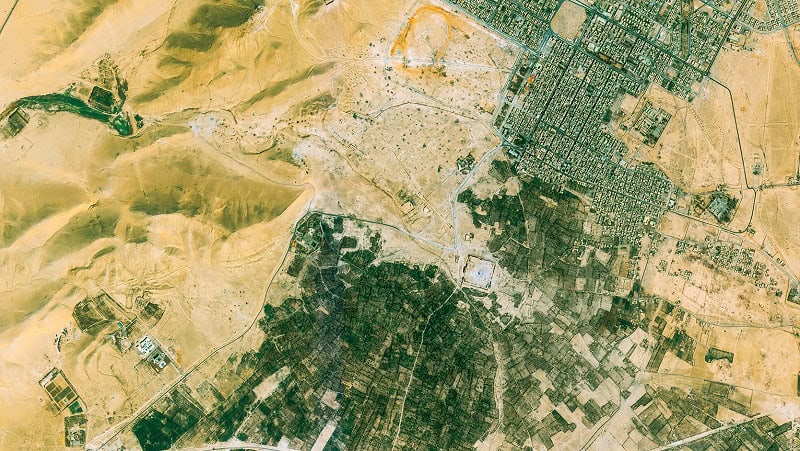There is a renewed desire to journey into space, writes comedian and radio presenter Robin Ince
On the day Neil Armstrong died, I was walking along the south bank of the Thames. There was a harvest moon, a beautiful coincidence, a moon so dominant on such a day. Sadly, I wondered how long it would be before we lived again on a planet where no human alive had stood on the moon. Eugene Cernan was the last man on the moon, three and a half years after Armstrong had set foot on it. By the time I was conscious of it all, the space race seemed pretty much over. When discussing interplanetary space travel with Brian Blessed, he was loudly disappointed that his boyhood dreams of a journey to Mars were still not a possibility.
But in the last few years, I have started to spot children in astronaut playsuits again and, increasingly, adults’ T-shirts emblazoned with the Nasa insignia. The excitement over the Cosmonauts: Birth of the Space Age exhibition at the London Science Museum has been palpable. There is a new hunger to journey into space.
Despite what you might be told by cultural commentators, not every child dreams of X Factor victory, some want to conquer space more than conquer Cowell. When the International Space Station visibly flew by on Christmas Eve 2014, some parents pretended it was Santa’s sleigh, but many realised that the truth was even more delightful for young minds.
“Not every child dreams of X Factor victory, some want to conquer space more than conquer Cowell”
Grand scientific adventures begin with excitations of human imagination. The end of 2015 saw the first British astronaut from the European Space Agency, Tim Peake, go to the International Space Station. There is increasingly frequent talk of Nasa’s proposed mission to Mars and October saw the first album of songs recorded in space released; Chris Hadfield’s Space Sessions. Our planet may be a small speck, but it happens to be home to an ambitious creature that wants to reach beyond its own habitat and even has designs on making homes on other planets. A mission to Mars holds many potential problems, including radiation. Nasa’s Gary Marin has said: “Every cell of your body would be traversed by a galactic ray, and we just don’t know what that would do to people.”
Radiation research on protection from cosmic rays reveals that lead, the go-to metal for protecting nuclear industry workers, actually creates a secondary radiation when struck by cosmic rays. The impacts of prolonged weightlessness on muscles and bone are better recorded.
No astronaut ventures into space without knowing he or she will return a changed human being – physically and psychologically – yet this is seen as no impediment to the thousands who queue up for rigorous testing in the hope of going into space, and perhaps of going further than any before.
There is still debate as to the practicalities of human space flight versus rovers and robotic probes. In cosmic terms, we cannot journey far yet. Our galaxy alone is 100,000 light years in diameter, and there are billions of other galaxies. Our species may well have died out before we are able to discover life beyond our planet. The history of our universe may be a story of many planets housing questioning, conscious lifeforms, and none of them may ever coincide technologically, so the best we may hope for is an interplanetary archeological dig or computer models predicting where future life may flourish.
None of that should stop the attempts to journey further. As we see the remarkable events occurring across the universe, we learn too how remarkable the prolific life that we see all around us is.
ISS vs ISIS

From the initial priming of the satellite to the analysis of the resulting image, it took only hours for the United Nations to determine that ISIS had destroyed the nearly 2,000-year-old Temple of Bel in Palmyra, Syria, in August 2015.
This image is the first time that Urthecast, the Earth-observation company that captured it, released same-day imagery of a critical area of interest for the UN. The satellite that took the image, Deimos-2, is being used to capture changes to the Earth. Urthecast claims it is using the technology ethically and aims to open up its data and democratise not only its satellite imagery but the tools to make images accessible and affordable.
This means that as well as providing views of the globe through an ultra high definition colour video camera attached to the International Space Station (ISS), Urthecast’s data can be accessed by developers, researchers, NGOs and journalists. It provides information about regions too dangerous or too remote to access. It is thought that comparing images over time may help uncover important stories, provide accountability for destructive actions, and also measure ecological changes and monitor humanitarian situations.
Urthecast’s founder, Scott Larson, says its approach is based on the ‘overview effect’, the phenomenon that leaves astronauts with an overwhelming appreciation of the planet and an urge to protect it. “It is a piece of this experience that we aim to provide for the entire world,” he says.
Photo: Urthecast
